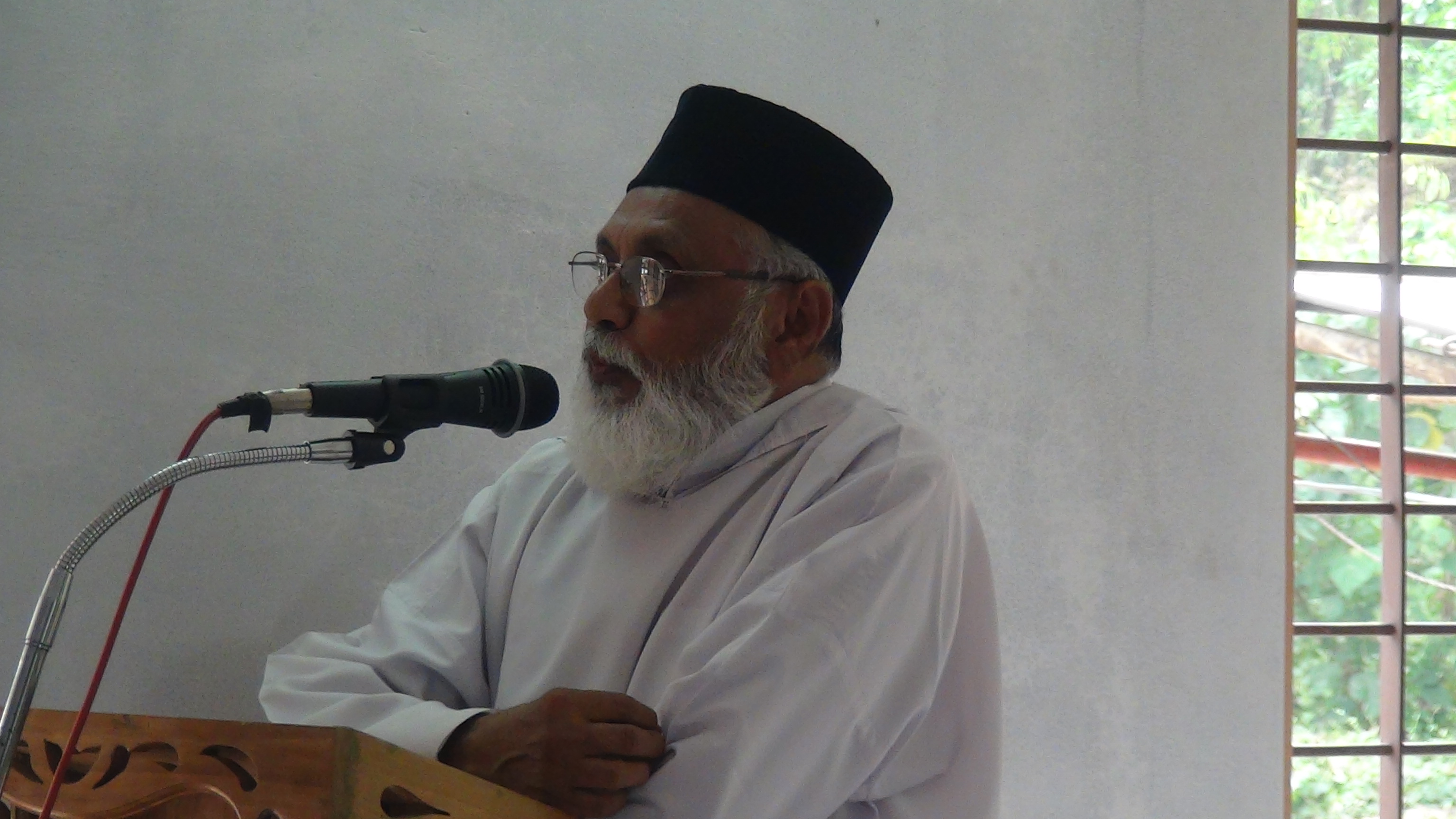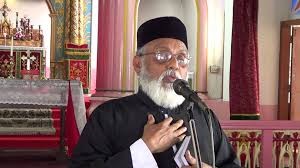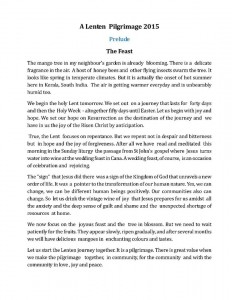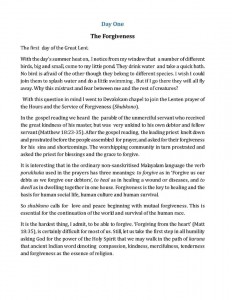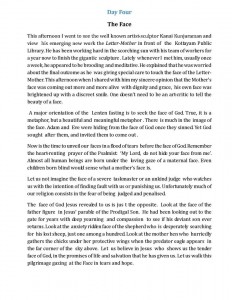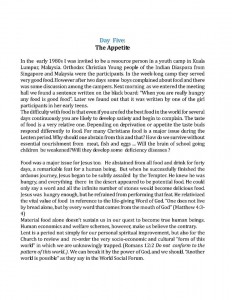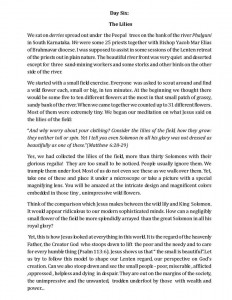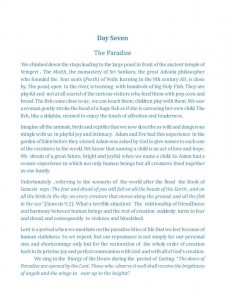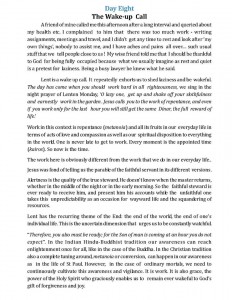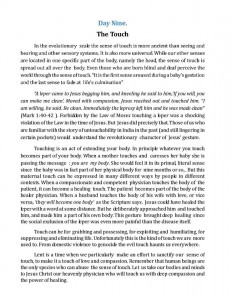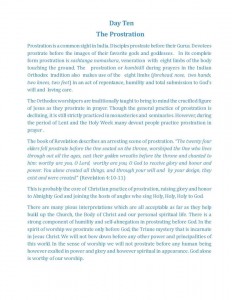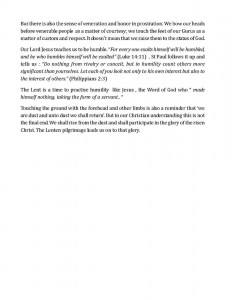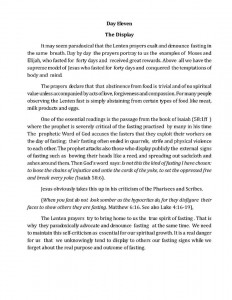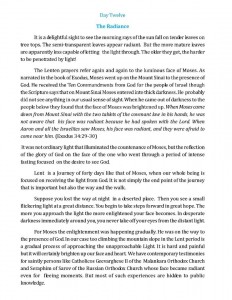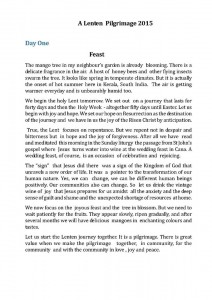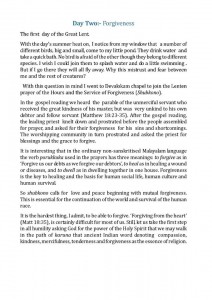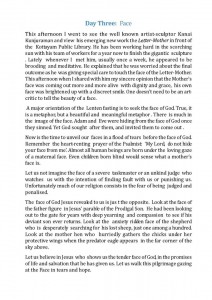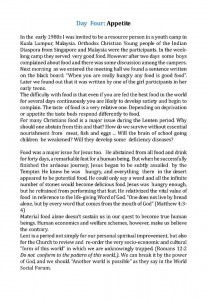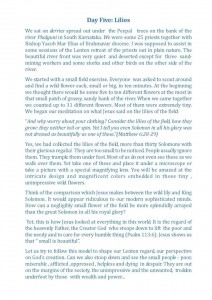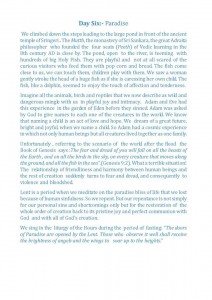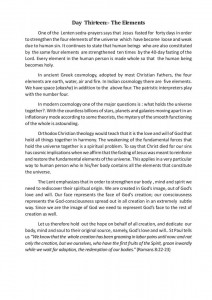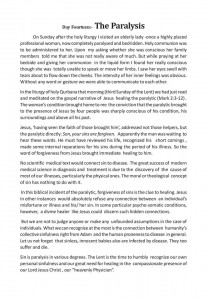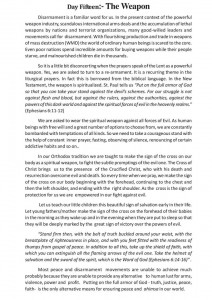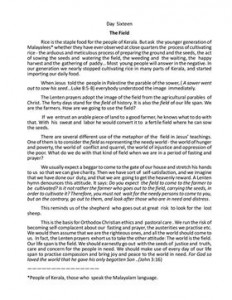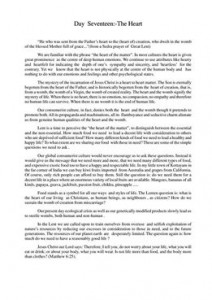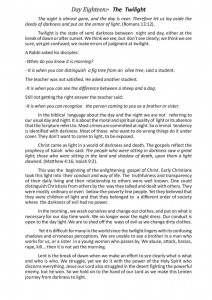A Lenten Pilgrimage-40
The Rising


It may be a pure coincidence of nature. The vigorous Passion Fruit vine (“Passiflora edulis”) and the delicate Easter Lily plant in my backyard showed up side by side with their splendid flowers during these days of the Holy Week when we meditate on the passion and resurrection of Jesus.
The Passion fruit was called by that name because some imaginative Spanish missionaries in Latin America, it is said, found in the tropical flower they saw for the time several signs of the crucifixion of Jesus, like for example, the three nails, five wounds, the crown of thorns, the lance that pierced his side and so on! Whatever that be, the name has come to stay.
What intrigued me was the way the two flowers appeared together- the Passion and the Easter- in my humble garden. In the liturgical theology of the Orthodox Church they are inseparable. The saving event that we commemorate and celebrate this week comprises the suffering, death and resurrection of Christ. They are one single unfathomable mystery.
In the medieval western Church’s theology and spirituality, a heavy emphasis was placed on the physical pain and suffering (passion) of Christ, and so the Resurrection of Christ had been relegated to the margins. The trend continued to modern times, and much of western art, literature and theatre including the much hyped recent Mel Gibson film “The Passion of the Christ” typically represented the medieval obsession with the gruesome and macabre physical suffering of Christ. This may explain why the medieval Latin missionaries couldn’t see in the splendid tropical flower the image of the radiant sun symbolizing the risen Christ rather than the exclusive tokens of the passion of Christ!
In the East, however, the Resurrection of Christ took centre stage except in those Eastern churches that came under the colonial influence of Portuguese and Spanish missionaries. Things have changed in the west after the second Vatican Council. Orthodox iconography of crucifixion and resurrection that portrays the equanimous and serene image of the crucified Jesus overcoming the horror of death has begun to influence the west.
The liturgical tradition has kept the healthy balance. There is no glorious resurrection without suffering and death , and there is no meaningful suffering and death without the hope of resurrection. Following the apostolic witness we proclaim the Christ crucified and risen. “For I delivered unto you first of all that which I also received, how Christ died for our sins according to the scriptures, and that he was buried, and that he rose again according to the scriptures…. If Christ has not been raised, our preaching is vain and your faith also is vain” (1 Corinthians 15;3, 4, 14)
Deprived of its transcendent dimension of hope , human suffering becomes absurd. Belief in resurrection is the only way to redeem human pain from its blind meaninglessness and absurdity.
The 21st century so far seems to be a century of suffering for the Christian faith. The age of the triumphalist western Christianity of crusades and colonial conquests is over. The Christian east had begun to suffer much earlier. Churches in the Middle East region, the very cradle of Christianity, continue to be in the crucible of intense suffering and the threat of total elimination. Christian martyrdom of the first centuries under severe persecution seems to be repeating under new oppressive forces in our age.
An Arab Christian friend Michel Nseir sent the following message:
“In our turbulent part of the Arab world, still holding on to hope in hopeless situations has never been more relevant to many than today. I see it as an invitation to be proactive in transfiguring our world…. Our resurrected Lord Jesus Christ was a loser in the eye of the empire, but victorious in our eyes, when we remain , like his disciples, faithful to his message of transformative love for all.”
The transformative power of true Christian faith has always been its amazing humility and goodwill, on the model of its Lord Jesus Christ, to forgive, to pray for and love those who persecute it. It is the power of resurrection of light and life over against the powers of darkness and evil.
The moment has come for believing Christians all over the world and people of good will everywhere to rise to save life through their own suffering, and secure justice, peace and joy to all God’s creation.
Christ is Risen. He is Risen indeed.
(Note: Two images of the Passion flower and the Easter Lily from my garden are posted on the Face book page of “Sopana Academy for Studies in Theology and Culture”)
A Lenten Pilgrimage 39:
The Hospitality
While living in a tent in plain desert Abraham received three travellers in his tent-house under the shade of an oak tree. They were total strangers to Abraham. His hospitality became legendary, and the incident narrated in Genesis 18 gave rise to interpretations of the doctrine of Trinity later in the Christian patristic era, and also to the celebrated icon of “Philoxenia” (=hospitality, literally ‘love of strangers’) by the Russian iconographer Andre Rublev in the 14th century. The theme of hospitality found a place in the reflections of contemporary philosophers like Jacques Derrida and Paul Ricoeur as well as in the political ethics of modern nation states.
It is known to us from experience that the poor are more hospitable than the rich in general. That means that the virtue of hospitality does not necessarily depend on material resources that we possess. In the ancient monastic tradition, hospitality was a prime Christian virtue for the monks living in the desert with practically nothing to offer to the guests.
St Benedict (6th century) in the west instructed in his Rules to consider every guest as Christ himself. (Remember the ancient Indian dictum “Atithi devo bhavah” – let the guest be god).
In Christ’s self-offering through suffering and death out of love for us and for our salvation we see the supreme example of divine hospitality. It is in the desert of the nothingness of self-emptying (kenosis) that God receives us strangers and aliens into the divine household and the banquet of the kingdom.
The anonymous woman who anointed Jesus at the house of Simon the rich Pharisee (Matthew 26:6-13 and parallels) deeply understood it and responded to the divine hospitality by an unusual and ‘extravagant’ act of human hospitality. Jesus drew out the contrast between the hospitality of a nameless, and even despised woman at a very inhospitable time and place and that of Simon, the rich host’s superficial hospitality with hidden ulterior motives .
The woman was exemplifying the meaning of the overwhelming divine hospitality of the Son of Man who was about to die on the cross by her own overwhelming, evocative, and ‘crazy’ gesture of love. Jesus alone recognized it and said that she did it for his burial. What a marvellous moment of mutual recognition between the divine and the human! In all likelihood, the nameless woman must have followed Jesus up to Calvary and beyond. Think of the “fragrance that filled the whole house” (John 12:3), and how what the woman had done is being told and retold across the ages as integral to the Gospel in memory of her (Matthew 26:13).
The subtle connection between love, hospitality and complete self-giving It may be a bit difficult for us to understand the suffering and death of Christ as part of God’s hospitality towards the created world. But Jesus himself tells us that “There is no greater love than to lay down one’s life for one’s friends” (John 15:13). Voluntary suffering for the sake of love for others is the ultimate in hospitality. When you take into your household people who are total strangers and passersby, people who are not related to you in any way, people who are in some dire need of help, you are making a silent commitment to ultimately lay down your life for them. Here hospitality is salvation in its rich meaning. To be hospitable means to be committed to save life.
The opposite of philoxenia or love of the stranger is “xenophobia”, fear of the stranger. We are taught to hate the alien, to suspect the passersby and mistrust and fear anyone who comes towards us. The irony of the age is that our world is now being ruled by high security systems and alerts claiming to save our life. At ever-rising cost of resources and relationships we actually curtail human freedom and rights, natural camaraderie and fruitful human exchanges in order to build devices of death in the name of safety and salvation. The long-term blessings and promises to humanity that true hospitality brings in, like in the case of Abraham and Sarah, are becoming more and more alien to us.
“See what great love the Father has lavished on us, that we should be called the children of God. And that is what we are!” (1 John3:1)
A Lenten Pilgrimage 38
The Buds
In traditional Kerala Christian Churches children show much enthusiasm to collect and bring to church lots of flowers and colourful leaves of plants on Palm Sunday. They enjoy throwing up flowers in playful delight during the special service of Hosanna. The day is also marked by the beautiful sight of the tender leaves of coconut trees (kuruthola) blessed during the service and carried by all the faithful. The Malankara Orthodox Church, according to its new lectionary, celebrates Palm Sunday as also the day of children .
Jesus rejoiced in the singing of Hosannas by children during his entry to Jerusalem. It was the fulfillment of a great Messianic prophecy (Psalm 8:2). “But when the chief priests and scribes saw the wonderful things he had done, and the children who were shouting in the temple, ‘Hosanna to the Son of David’, they became indignant , and said to him, ‘Do you hear what these children are saying?’. And Jesus said to them, ‘Yes; have you never read, ‘ Out of the mouths of infants and nursing babies you have prepared praise for yourself?'” (Matthew 21:15-16).
The close connection between the small children on the one hand and the sprouting plant buds and flowers on the other is obvious. Both represent the budding life. Both hold promises for the future and life’s fruitfulness. Both witness to the hope of new life and the new order of the world to be brought about by the Messiah. Both have a certain transparency and loveliness of innocence that attract discerning people of good will.
It may seem paradoxical that a radically new vision for the world and for a new order of life sprouts in the most unlikely place, namely the desert. So all the biblical heroes that we celebrate in the Lenten prayers had something to do with the desert or desert like situation hostile to life. The dreary desert of the great Lent can become the fertile seed-bed for the budding life.
A Lenten pilgrimage 37:
The Incense
“Botafumeiro” is the giant 80 kilogram censer (dhoopakutty) in the Cathedral of Santiago de Compostela in Spain. It is hanging from the roof of the huge cathedral and is swung by a team of special operators who, to me, looked like Spanish “matadores”, the bullfighters . Some 40 kilograms of incense and charcoal are fed into it for every performance that attracts big crowds. It sends out huge columns of smoke in striking configurations in the air. It was a stunning experience for a priest used to small, handy censers in the Indian Orthodox parish churches.
The use of incense in liturgical worship was common to both the western and the eastern Christian traditions. It however has become almost a nominal practice in the west today while eastern Christianity still generously makes use of incense in worship. There is a rich biblical symbolism associated with the smoke of incense and its fragrance.
When we burn certain spices like frankincense in public worship the sweet smelling smoke that rises into air is considered, according to biblical symbolism, to be the rising prayer of the community.
“And the smoke of the incense , with the prayers of the saints, went up before God out of the angel’s hand” (Revelation 8:4). The fragrance of our offerings is well pleasing to God according to the Old Testament scripture. We are also called the “aroma of Christ” by St Paul (2 Corinthians 2:15) .
In one of the Lenten prayers Jesus Christ is called the “pure smoke of incense that pleases the One who sent him by his self-offering, delights the creation with his fragrance, gladdens his handiwork with his sweetness” (Palm Sunday Night, Ethro).
Our prayers are to transcend the world of daily living while its fragrance gladdens and heals the surroundings. It is like music. Prayer at its core is music. That is why we chant musically even prayers written in prose. We know that music has this celebrated quality of rising above the divisions while harmonising disparate and dislocated s elements in our surroundings.
Typologically we may consider the Lent as a giant censer. Our virtuous thoughts and actions, our prayers and intercessions, pain and suffering, sighs and tears – we offer like frankincense to the glowing embers of the Lenten censer. They are then mixed with the prayers of the saints of all ages and all places, and rise to God’s throne of mercy.
We sing the psalm in every evening prayer: “May my prayer be counted as incense before you; the lifting up of my hands as the evening sacrifice” (Psalm 141:2)
A Lenten Pilgrimage-36:
The Test
As children we used to be amused by the song of the Indian Cuckoo, popularly called “Achen Kompathu pakshi “or “Vishu pakshi”in Kerala.
A rather shy bird that appeared in Kerala during March- April it was not easily visible, but its song was loud and resounding. Children used to parody the rhyming sound of the bird in humorously absurd words like “achen kompathu, amma varampathu”. Hence its name “achen compathu”. We children competed in exercising our parodying skill by inventing funny two-line parodies.
Some of us associated the bird song with the exams as the Achen-kompath bird used to appear in the season when we were preparing for our school exams in March. Later we also linked it to the Lenten season. Retrospectively one sees that both the exams and the lent are kind of tests. Jesus was tested by the tempter, and he passed the rigorous exams in the desert’s desolation after a 40-day long test.
The Achen-kompath bird was also a sign bird. Suppose you are praying hard to God for an answer to some knotty personal questions, but you don’t get any. You may become dispirited and confused. Then, according to some, this bird’s song may give you a clue to the solution of your problem. A great man of God in our time, Metropolitan Geevarghese Mar Osthathios of blessed memory once told us an amusing story. Staying at the Bethany Ashram of the Malankara Orthodox Church as a young sub deacon he was praying for divine guidance as to his vocation- whether he should become a celibate priest or a married priest. After several days of prayer and meditation he was still wavering without any clear answer from God. Disappointed he was about to depart from the ashram. And then all on a sudden he heard the song of this bird in the thickly wooded Bethany environment. An interpretation of the bird call spontaneously rhymed in his mind. “Ippo kettenda. Pattam kettikko“( Don’t get married now. Get ordained !). You may believe it or not. But he followed the bird’s message to the great blessing of Church and society as later history proved.
Well, God’s will can be revealed to us in mysterious and totally unexpected ways in nature. Some sort of a theophany, manifestation of the divine..!
Recently I was visiting the family of a good friend of mine. They were passing through a very distressing time as their ancestral home, a very fine old building, had been destroyed by fire. Graciously no one was physically hurt.
As I was taking leave of the family after the pastoral visit, we heard two “Achen-kompath” birds, hiding at some good distance from each other, make the familiar resounding call. With the burned house in the background the bird’s sound simply rhymed in my mind as “Kathipokkotte. Daivam Koottunde” ( Let it burn out , God is with us). My friends were strong in faith and trusted God’s providential care. They too, I believed, probably heard it in a similar consoling way.
The family was literally passing through a fiery test. Some sounds and sights in nature can be a timely message from heaven. In this context I dared to interpret the it as a sign of assurance about God’s empowering presence and care in our moment of testing.
“Look at the birds of the air, they do not sow or reap or store away in barns, and yet our heavenly Father feeds them. Are you not much more valuable than those birds?”(Mathew 6:26)
A Lenten Pilgrimage-35
The Night
“David got up in the thick of the night in order to sing praises to the wonderful decrees of God, and he saw the amazing beauty of the moon and the stars decking the firmament of the sky, and he marvelled at their order”.
The night is glorified in the Lenten prayers notwithstanding its ambiguous symbolism related to ignorance and evil. The Lent itself, despite its apparent dryness of fasting and abstinence, can become a night of spiritual streams and a night of revelation of the higher knowledge of the beauty of God’s ordering of creation.
For those inclined to a meditative quiet there is no better time than the night. Covered by the dark veil and hidden from curious eyes and with most of her children put to sleep, mother nature goes into a deep meditation herself. So the best time and place for our own meditation is the lap of nature at night.
The gospels tell us that Jesus left the crowd and even his close disciples in the evenings “and went up alone to the mountain to pray.” There he had no man-made building to stay in, but it was plain nature open to the vast sky.
For most people the vision of the sky at night is more enchanting than that of the day. While the blinding light of the sun eclipses all stars in the day sky, they come out in their infinite numbers and delightfully illuminate the night sky in the absence of the sun.
When things go against us, when we suffer from serious set backs, loss or disease we say it is night for us. But the very night of disarray and despair can provide to us an exquisite vision of the universe in its broader and brighter dimensions. Meditating on this mystery of the night vision we will be filled with new hope and plans for the future. The night is spiritually the most creative time for a deeper perception of our life.
As a practical step we need to go out at some odd hour of the night and watch the starry sky in a meditative mood thinking of their incredible distances and the amazing rhythm and harmony of the planetary and galactic movements. Being aware of our own breathing we can listen to the music and feel the pulse of the universe, and be profoundly grateful to God our Creator for the very life in us.
A Lenten Pilgrimage-34
The Tears
Tears are older than smile in human biological evolution. They have a clear physical function. The lacrimal secretion known as tears constantly cleans and lubricates the eye balls. However, we usually associate tears with our emotions.
Our eyes can be watery for various reasons. Some of the reasons are physical. For example , when we have an allergy or nerve malfunction, or dust particles or other irritants entering the eye or in contact with some pungent vapour like that of the onion, or we ‘cry’..
At the psychological level, tears are related to our deep emotions. For example when we have a sense of loss by death or otherwise of a family member or a close friend, or when we lose some of our valuable material belongings by theft or fire or accident .
Some cry by empathy, when they see the pain and misery of another person, or read the news of a tragic event involving death and suffering of people.
Some of us cry when we are afraid, or feel insulted or helpless and so on. These are tears of sadness.
Some cry when there occurs any matter of great joy by surprise, as for example, when they achieve a coveted position or prize or a bumper lottery or the chance meeting with a long lost bosom friend or on hearing a touching word of appreciation…These are tears of joy.
In any way these emotional tears help us release the mounting stress in us, restore the balance, and clean the windscreen of our mind, just like the physical function of tears that maintain the wetness and thus clean the eyes.
In the Lenten period the hymns and prayers speak a lot about tears, but on a different plane.
First there are tears of repentance. We cry when we realize that we have done some serious wrong to others by hurting them in some way, or by neglecting our duties or squandering our resources or being insensitive to the love of others or when we feel remorse for some criminal acts on our part . These tears are considered healthy, – psychologically and at deeper levels spiritually. These are the tears that are associated with a true sacramental confession. Tears can be a more or less a sure sign that the person realizes his or her serious sinful act. (not forgetting that some people can wilfully produce tears that are deceptive, the ‘crocodile’ tears). Repentance would mean not only admission of sins but also a sincere submission to the love, compassion and forgiveness of God , and consequently a wilful determination on our part not to repeat the sinful conduct. We tend to cry when we receive unconditional forgiveness for the sins of omission and commission on our part. This leads us to reconciliation with God and our fellow human beings. It generates internal peace and the virtue of genuine hope within us. We are assisted in this process by the grace of the Holy Spirit who helps us discern the way of light and life.
Secondly, there are tears that are generally called ‘the git of tears’ in the spiritual tradition of the eastern church. It is far deeper than the tears of repentance. The physical , emotional and ordinary spiritual reasons are not there. These tears flow out of a person ‘automatically’ without wilful knowledge or control when that person is filled with a profound awareness of God’s creation, the mystery of love and the depth of existence. These tears include all that we speak about under compassion, empathy, repentance, forgiveness, joy, reconciliation and so on, but it transcends all these. Their source is totally unknown. So it is called a gift. It is ecstatic in character for those who receive this gift. The gift of tears point to the mystery of creation.
The gospels pass under respectful silence the tears that flowed from Jesus in the solitary nights with only the moon and the stars, the wild figs and olives or the total darkness as his only witnesses when he withdrew from even his close disciples and went apart to pray. They, however, explicitly mention Jesus weeping at the tomb of his friend Lazarus or at the sight of the beauty of Solomon’s temple of Jerusalem. We may understand in human terms the reasons for his tears on such occasions, but not the other.
We have examples, even that only partly known , of saints like Saint Isaac of Nineveh who spoke about the experience of the gift of tears. As a young boy this writer had heard stories from an elderly gentleman contemporary of Saint Mar Gregorios of Pampady about the discreet and abundant tears of the ascetic bishop while the latter was a deacon . Retrospectively one wonders if those tears had anything to do with the gift.
A Lenten Pilgrimage-33
The Kanikonna
Jesus said: ” The kingdom of God is like a man who casts seed upon the soil ; and he goes to bed at night and gets up by day, and the seed sprouts and grows – how, he himself does not know. The soil produces crops by itself; first the blade, then the head, then the mature grain in the head..”(Mark 4:26-28).
I fondly remember the “Kanikonna” tree that stood on the northern side of the Old Seminary chapel and blossomed in March- April during the Lent season.(The tree is called Golden Shower Tree in English or scientifically Cassia Fistula). Every time we students walked into the chapel for the Lenten fasting Prayer of the Hours in the oppressive heat and humidity of South Indian summer, this modest tree with its rich golden yellow flowers was an enchanting and soothing sight. Every little branch was covered with bunches of flowers and on every bunch there would be some fully unfolded golden flowers and dozens of green buds of various sizes, from the very big to the tiniest, waiting for their turn to bloom. Every bud undergoes patiently the process of slow maturing . Every day there will be new flowers added to the older ones on hundreds of bunches, and towards the end of the Lent the whole tree would be only flowers and it turns radiant with a golden hue..
What was interesting was the efflorescence, the slow growth and gradual unfolding of the buds to full bloom. Our Lenten spirituality, it seemed, was very much nourished by the flowering process of the Kanikonna . (It is the state flower of Kerala and the “auspicious -sight” flower of the Vishu festival, the time of Spring Equinox in South India). It is slow and steady. Every bud needs its own time to mature and unfold. Every step is taken slowly and gradually.
There is no hurry, no space for despair. Every day new blooms appear. Every bud comes out with a new message of hope -for the life, the beauty and the joy of the world.
The Orthodox spiritual tradition emphasizes the gradual steps like in the “Ladder of Spiritual Ascent” of St John Climacus.
The 40 days of fasting and prayer of Jesus in the desert, the 40 days of Moses climbing the Mount Sinai in the desert , and the 40 days of the prophet Elijah walking in the desert to Mount Horeb – all betray this gradual character of our Lenten spiritual exercise. Nature’s life cycles give us inspiring models for our own pilgrimage.
A Lenten Pilgrimage-32
The Lamp
It is a familiar sight in Hindu temple festivals in India where traditionally dressed women wait with lighted oil lamps to receive the image of a god or goddess taken out in procession. A similar reception by young girls with flowers sometimes takes place when important personalities are received at social functions. It happens not infrequently that the arrival of the personalities gets delayed, and some of the waiting young girls get tired, faint or become sleepy and lose their lamps and flowers. This reminds us of the well-known parable of the Ten Virgins told by Jesus.( Matthew 25:1-13). It is one of the favourite Lenten themes. Christian art especially in the West is deeply influenced by this parable of great aesthetic and spiritual significance .
The contrast between the vigilant preparedness of the five wise virgins and the lazy sleepiness of the five foolish virgins illustrates the contrast between those who eagerly wait for the Lord and those who are indifferent to the goal of life. The parable clearly points to the end of history and the end of our life when we face the final judgment of God.
“Therefore keep watch, because you do not know the day or the hour” (Mathew 25:13)
The Lent is symbolically the span of our life which is a time of vigilance and readiness to receive the bridegroom, and enter the chamber of lights with him to participate in the everlasting wedding celebration.
The vigil, the state of wakefulness, is an essential part of Lenten fasting. This does not always mean that we literally deprive ourselves of sleep, but that we take care of our internal awareness with a view to enlightenment. Continuous prayers like the “Jesus Prayer” with breathing and the regular reading and meditation of the Word of God can help us trim and illuminate our awareness.
Above all the Lent is a time of joyful expectation. We are filled with hope for the future, and therefore we don’t count time.
But imagine the contrary experience of looking at future with a dismal anxiety . Usually this is our lot. We count time; we are bored; we pay all our attention to trivial things and silly conversation. We are disappointed, and we quarrel at home and in society. When the important thing happens we are not there. We regret, but it is too late.
In one of the Lenten prayers we pray:
“Re-lighten, O Lord, our lamps that are extinguished for want of righteousness”.
This is about the equipment that we are required to carry with us as we wait. Christianity brought to the world a very fine set of ethical standards in social life -justice, equality, freedom, human dignity, peacefulness, forgiveness, honesty, humility, service-mindedness …
These values constitute the oil that keeps the light of our hope burning. But now regrettably most Christians have lost these essential ethical standards of right living. The Christian mission now is to restore these essential values required for a really human community life.
All our socio-political ills like rampant corruption and denial of justice to the poor arise from our lack of will or indifference to practise them. So we need to check and re-check if our lamps are still burning, if our dresses are smartly in order, if we are just and honest, humble and ready to serve our fellow human beings in need whatever be their race and religion.
Thirty:
The Martyrs
The world was terribly shocked when the ISIS (Islamic State) army brutally beheaded 21 young Coptic Orthodox Christian workers in Libya recently. They were killed because they were Christians. They did not do any harm to anyone. They left their poor villages in southern Egypt in search of work in order to help their families survive. In the video strip telecast by the assassins some of those victims were seen to be reciting the name of Jesus moments before their innocent blood mingled with the waters of the Mediterranean just “south of Rome”.
Contrary to all human logic, amazing divine grace, forgiveness and faith prevailed in the families of those young men who died as bold witnesses (martyrs) to their crucified Lord. The mother of the two young brothers, Bishoy and Stefanos, killed along with 19 others, thanked the IS army for letting her beloved children enter the kingdom of God by the gate of martyrdom… ! There were originally only 20 Coptic Orthodox Christians. The 21st one was a young black African from Chad who, watching the amazing faith of his fellow workers, confessed Christ and was beheaded as a martyr.
The Coptic Orthodox Church has declared the 21 youth as martyrs for Christ and recognized February 15 as the Feast day of their commemoration in the Church calendar.
One is reminded of the 40 martyrs of Sebaste brutally killed by the Roman army of emperor Licinius in Armenia in 320 AD. They were young soldiers who refused to renounce their Christian faith, and were thrown naked into a frozen lake. We remember their martyrdom on the fifth Saturday of the great Lent.
Their story is touchingly similar to that of the Coptic Christians. In the Sebaste killings in the 4th century there was also a courageous mother who stood by her son encouraging him to face the cruel death with unswerving faith and hope in Christ. There was also one young man among the 40 who , unable to face torture and death, left his brothers for the warm bath kept ready for anyone who renounced his faith. But a Roman guard, watching the courage of faith of the 39 young men, confessed Christ, jumped into the frozen lake and courted the death of a martyr!
The Sedra prayer for the Feast of the 40 Martyrs of Sebaste in the Lent says that the number 40 of the martyrs suits well the 40 Lenten days of the Lord’s fasting and prayer. What can we say about the number 21 of our contemporary Coptic martyrs? Can we say the number 21 stands for 21st century?
Yes, probably. Christian faith is going to face great suffering in this century. It has started in many places including our own beloved motherland India. What would then be our witness to the Prince of Peace and the Gospel of love? (the Greek word ‘martyria’, cognate of martyr, is translated as ‘witness’).
“Then they will deliver you to tribulation, and will kill you, and you will be hated by all nations because of my name…But the one who endures to the end will be saved”(Matthew 24:9-13)
Twenty-nine
The Owning
The Sanskrit word “tiryak” stands for all non-human creatures in general. The word means bent, horizontal, slanted or crooked, and it refers particularly to animals that walk on four legs. Their spine is horizontal and the face and eyes directed to the earth. This contrasts with the straight body of a human being who can stand erect and look up to the sky ( “homo erectus” marks a crucial mile stone in the story of biological evolution).
The bent woman whom Jesus heals in the synagogue on a Sabbath day had been physically reduced to the animal condition. She had put up with its suffering and the indifference and contempt of others for over 18 years. She had never dreamt that her condition would be altered, and so never sought any healing. Jesus, therefore, had to call her to come forward, and he placed his hands on her to restore the original condition of her body. This is one of those few occasions when Jesus heals someone without an explicit request to be healed.
Jesus’ act of liberating the this old woman, probably a poor widow, on the margins of society, provoked an indignant reaction on the part of the leader of the Synagogue.
He deplored it and decreed that the act of healing was a “work” that violated the holy Sabbath of the Lord. Sharply retorting, Jesus referred to the animal condition by asking if the owners of cattle took care to water their oxen and donkeys even on a Sabbath day. Then Jesus conferred a great honour on that insignificant woman reduced to animal condition by her physical infirmity and social apathy. He called her “the daughter of Abraham”. By raising a poor anonymous woman practically ignored by all to a new name and status, Jesus owned her as a true descendant of Abraham. Jesus thus once again illustrated the Gospel of the kingdom. He highlights for us the calling of the Church today to own the disinherited, to straighten those who are stooping and languishing in the shadow of death and gather all those in the margins into a new race of human beings.
Jesus Christ is our redeemer and liberator says: “Come to me, all who are weary and heavy-laden, I will give you rest” (Matthew 11:28).
Twenty-eight
The Waiting:
We were a small motley crowd huddled in the waiting room of a famous physician in a big Kerala hospital. Coming from different places we hardly knew each other. Since the rule was first-come-first-served we had taken our seats already by 7.30 in the morning though the doctor would come only by 10.30.
Breaking the initial silence people started talking. One gentleman in a wheelchair said he was brought back to life by the doctor from a very fatal condition. Some others also gave testimonies for the compassion and competence of the physician. Being a first-timer to consult that doctor I was given a lot of advice by experienced fellow patients, but all pointed to the possibility of healing. In fact, our discussion was centered on hope, healing and the skill of the physician.
Being in the time of the great Lent, I happened to draw an analogy between the doctor’s waiting room and the Lenten period. I was reminded of the daily prayers in which we repeatedly meditate on disease and suffering, healing and the heavenly physician. In those prayers from the Orthodox tradition disease is called sin, suffering ill-health, healing the uprooting of sin along with its symptoms, and the physician, of course, Jesus Christ, the compassionate healer.
We have come to the Lenten waiting room with various diseases of body , mind and soul. We were strangers to each other. But we broke into an animated conversation, focused on each other’s disease, its symptoms and the suffering it caused. It was all different one from the other. But we were united in one thing, namely, our deep desire and hope for healing to be fulfilled by our able and sympathetic physician. We listened to each other with understanding, because we were all in the same condition of illness more or less; we supported and encouraged each other and became one body in the intense and shared desire for healing and wholeness.
Is it not what is expected of the church community as we observe the Lent? Let us pray for each other, be sympathetic to each other’s faults and shortcomings; let us encourage each other to wait patiently for our Healer in faith and hope. Our Physician is the one who takes up our pain and bear our suffering. “When evening came, they brought to him many who were demon-possessed; and he cast out the spirits with a word, and healed all who were ill. This was to fulfill what was spoken through Isaiah the prophet: He himself took our infirmities and carried away our diseases” (Matthew 8:17)
Twenty-seven
The Wings
Human beings are winged creatures! Or so they dream to be. From the time of the Wright brothers in the late 19th century to that of space shuttles and the solar powered experimental airplane now flying around the globe, humanity has been perfecting the art of flying. Religious mythology is replete with flying beings and even airplanes like our puranic “Pushpaka Vimana”.
The Christian tradition, however, has always held that the soul has wings and is capable of rising to the heavenly heights. We are taught that the soul is weightless, invisible and unaffected by the power of gravity. It is probably this spiritual soul-force within us that make us resolute flight-aspirants. “Those who wait on the Lord will renew their strength; they will soar on wings like eagles..” (Isaiah 40:31)
The Lenten prayers describe prayer as having wings.”Prayer is love-ful: unless love lifts it up its wings are weak”.
The ascetics and people who genuinely observe fasting witness to the body’s light weight experience. In other words, the soul’s character is transferred to the body which is naturally heavy and pulled down by the earth’s gravity. There is a phenomenon of ‘levitation’, the gift of rising gently from the ground while in prayer or meditation attested to by certain spiritual figures.
We are not focusing here on the physical rising but simply mention that even that is reportedly possible. We are concerned about the lifting up of our inner person to the heights of a new awareness of our spiritual gifts through fasting and prayer.
Interpreting the experience of Adam and Eve in paradise before the fall and on earth after the fall, the Fathers like St Gregory of Nyssa would say that the physical body of our first parents, which was weightless and transparent in paradise, became heavy, opaque and thus subject to the forces of nature on earth . So the spiritual struggle of humanity has always been to overcome this slavery of the body to the material forces, and to rise to its original transparency and lightness. In the observation of fasting and prayer and other spiritual exercises, we make an attempt to subordinate the instinctual natural drives like hunger, thirst and sex to our higher goals of spiritual soaring and transcendence. We also need to be liberated from our inclination to debasing passions like power, pleasure, possessiveness, and aggressiveness.
So spiritual exercises like fasting and prayer need to develop wings in order to climb high levels of experience.
According to the best of the Gospel tradition, love alone generates those wings
Twenty-six
The Thooyobo
The Eucharistic liturgy begins with what is called the service of “Thooyobo” smile emoticon preparation). This touching preparatory part of the liturgy is performed nowadays by the priest alone in the silence and seclusion of the closed sanctuary, while the congregation sings the morning office outside of it.
The preparatory service comprises, among other things, three elements :
– Placing of bread and wine to be consecrated on the altar.
– Prayers of personal repentance and confession of the priest.
-Priest’s prayerful vesting ,- wearing of sacred vestments,
– Intercessory prayers for all kinds of people from Adam and Eve to the present.
It is done silently or in subdued voice and the whole preparation becomes the proper base for the public liturgy. For those who do it in its true spirit it is really empowering and deeply moving.
We may take this “thooyobo” (preparation) for the public liturgy as a metaphor for other aspects of our spiritual life too. For example, the Lent is considered as preparatory to the great and saving celebration of the death and resurrection of Christ.
Closeted in the silent cave of our Lenten practice, we may experience dimensions of silence, sobriety and sojourn essential for our Lenten spirituality. We don’t need to display our fasting and related practices to people outside though we join the community prayers and observe the fasting rules of the Church in parishes, monasteries, seminaries and homes.
The metaphor of preparation can also be applied to our whole life. As the acetic Fathers point out again and again, our whole life in this world is preparatory for the eternal life to come. We try to bring out the holiness of life through meditation of the Word of God and the exercise of virtues.
Let us enter the secret chamber of our heart as Jesus taught us. In repentance and hope let us place our lives on the altar of Christ as a living sacrifice of praise; let us put on the “garment of incorruption”, the vestment of immortal glory. Let us uphold all those who are weak and suffering, the poor and the oppressed before the merciful Father in heaven.
Twenty-five
The Breath
“Let everything that breathes praise the Lord”. (Psalm 150: )
Of all ancient civilizations of the world India alone seems to have gone deep into the mystery of human breathing in order to connect it with spirituality. The Yogic understanding and practice of “Pranayama” begins with simple breathing exercises, enters the field of vital energy and finally leads on to higher states of consciousness. Here our usual breathing is controlled in such a way as to create new levels of spiritual awareness.
Breathing is life, and it comes to us naturally from the moment of our birth to the moment when we breathe our last. The Jewish-Christian Scripture , in fact, begins the story of creation with the Spirit (=breath, wind) of God breathing over the dark and the deep, sweeping over the face of the waters of nothingness (Genesis 1:1-2). “-Then the Lord God formed man from the dust of the ground, and breathed into his nostrils the breath of life; and the man became a living being” (Genesis 2:7).
It is in continuation of this that in the New Testament, with the coming of Christ, the Holy Spirit or the Holy Breath of God, is associated with the new creation, the renewal of all created reality. The Church is the icon of the new humanity formed by the Holy Spirit beginning with the Pentecost experience as promised by Christ.
The breath of life in us is of divine origin. It is one of the most profound mysteries that we daily live with without being aware of it. But we can explore it as much as we are able as it was done in this country.
We have a common problem of bad breath when food particles degenerate between our teeth, or when we have certain diseases. Even simple abstaining from all food and drink can create bad breath. We are daily bombarded with all kinds of pharmaceutical remedies for bad breath! When we eat food gluttonously without gratitude to any one, when we breathe out abusive words against others, when we harbour evil thoughts and jealousy, when we pollute the atmosphere with all kinds of chemical and industrial waste, our breath is poisoned. It degenerates, and it is the end of life. It smells death -the ultimate bad breath.
It is interesting to know that the Christian tradition speaks of the “sweet breath” of saintly persons who have transformed their human breath as a continuation of the breath of God through their holy lives. This is not only metaphorical but also experiential. One of the Sedra prayers in the liturgy make us pray: “May our breath be filled with your fragrance, our mouths be opened to sing your praise and our tongues made ready to sing your hymns” (Mor Osthathios of Antioch)
Lent is the time to learn to sweeten our breath by the practice of virtues. Those of us who are specially gifted and called by God in monasteries or elsewhere may also try to develop a practical Lenten Pranayama with the goal of attuning our breathing to the rhythm of the Holy Spirit and of producing ever higher states of awareness of love, compassion and the presence of God.
Twenty Four
The Intercessor
In the Lenten Friday midnight prayers, we are exhorted thus: “Take courage, O you who pray; do not be dispirited or slothful, because the entire prayer of the Son of God is for you. Therefore attach your prayer to his powerful prayer, and then your prayer will be answered.”
What a consolation for those who have feelings of despair while they pray! It often happens that we feel helpless and confused in our prayers. We are not sure if our prayers will be answered. We need some degree of certainty about the result of our prayers. But then we need to know how to pray. The admonition cited above teaches us a method or ”technique” of prayer. We need to attach our prayers to the great high-priestly prayer of our Lord Jesus Christ in our favour. We are used to sending “attachments” along with our letters and email messages. If there is an attachment it is indicated by a special sign. The attachment goes only together with the main message.
Christ is our unique intercessor before God, the Father. He is the only mediator between God and the humanity. According to the Letter to the Hebrews, Christ is our pioneer in faith, our eternal high priest, our mediator and intercessor. “He is able to save completely those who come to God through him, because he always lives to intercede for them (Hebrews 7:25) . According to St Gregory the Theologian (4th century), Jesus Christ, the Second Person of the Trinity, “still pleads for us as Man” with his full humanity which is united with the Word of God incarnate. “For there is one God and one mediator between God and human kind, the man Christ Jesus..” ( 1 Timothy 2:5)
We invoke the Holy Virgin, Mother of God and other saints to pray for us. This is fully in tune with the unique intercession of Jesus Christ. The Holy Mother, the apostles and the saints cannot make any prayer apart from the prayer of Christ our High Priest, for they themselves have received the grace and holiness of God through Christ the only Mediator. In holiness and by the practice of virtue they are fully integrated to Christ. As we ask each other to pray for us in this world, so we ask the Holy Virgin and the saints, who overcame the world by the power of the Holy Spirit, to pray for us through Jesus Christ, our Savior. We pray for them too. Praying for them and requesting their prayers is the great sign of our communion with those who are fully in communion with our Lord. Their prayers for us are also attached to the prayer of the Lord, and are more powerful than the prayers of those who still struggle in this sinful world.
The Church teaches us that our prayers are not to be isolated individual supplications but collective outpouring of the heart of the whole people of God. It is compared to the image of the rain. Rain falls drop by drop. Each drop of water by itself has no power. But when tens of thousands of drops are collected, they become a mighty stream. It is hardly possible for us to stop such a formidable torrent of water. Our prayer in community is likened to such a powerful current of water that can break open the door of divine mercy.
In the Lenten period, we are admonished to add each drop of our prayer to the prayers of all those who pray unceasingly for us and for the world. Above all it is our Lord Jesus Christ who prays for us. So let us take courage and persist in our prayer without any doubt or disappointment.
Twenty-three
The Centering
The ancient medical symbol of a snake entwining a vertical rod is familiar to us. Used still in modern medical profession in different forms it is given various interpretations. In one version it is referred to as the symbol of the Greek god Asclepius, the god of healing and renewal of life. Since a snake periodically sloughs off its outer body layer, it is said to be representing renewal and return to youthful life. It is also an ambiguous symbol since the physicians and their medicines remain in between life and death; they can either heal or kill.
It is remarkable that in the Book of Numbers a similar symbolism is associated with the brazen serpent raised by Moses in the middle of the camp of Israelites for the healing of those bitten by poisonous snakes. (Numbers 21:9). It was a curse against those who rebelled against God during their forty years of wandering in the desert. The very symbol of curse became the symbol of healing. This is further taken up by Christ, the heavenly physician, in his incarnate life:
“As for me, if I am lifted up from the earth, I will draw all people to myself” (John 12:32).
“Just as Moses lifted up the snake in the wilderness, so the son of Man will be lifted up”.(John 3:14)
In the Orthodox Syriac liturgical tradition we symbolically enact this saying of Christ by erecting a wooden cross on a raised wooden stand in the middle of the nave of the church on mid-Lent Wednesday. As the people of Israel bitten by poisonous snakes looked up to the brazen serpent and were healed, we look up to Christ on the cross for healing and protection from evil and the death of sin.
The centre of the church representing Space, and the midpoint of the Lent representing Time are significant. They stand for our life span and the space of the universe. So the life-giving Cross of Christ, the Tree of Life that heals nations, is planted at the very centre of Space and Time.
Every believer who enters the church is instructed to kiss the red trapping of the cross in repentance and hope. We need to take this symbol of the cross of Christ, our Healer-Saviour, to our heart, the innermost core of our existence.
When in danger human beings usually look outside for any help. When we are about to drown we desperately stretch out our hands and look out for something to hold on to. But in our spiritual life we will come to a point where we cannot find anything or anybody from outside to come and help us. All that we depend on, or put our trust in, will vanish. In the thick darkness we will grope around for outer light, but we have only the inner light to enlighten us.
Therefore we need to implant the cross in our heart so that we can draw healing and life from this inexhaustible inner fountain, the very source of our being.
In the Lenten period we make a special effort to weave our life round the cross of Christ, and search for the inner light of Jesus amidst the surrounding darkness of suffering and hopelessness.
We cannot by any means ignore the suffering of people, those who crave for a touch of healing , and those who dwell in the dark shadows of death. Lifting up the cross of Christ that radiates healing and hope, light and life is the holy task that we take up these days.
Day Twenty Two
The Siddhi
“Who is this? Even the wind and the waves obey Him?” (Mark 4:41)
The Lenten prayers repeatedly highlight great heroes in the Old Testament like Moses and Elijah, Joshua and Daniel, Hananiah (Shadrach) and his two friends as examples of persons who accomplished superhuman feats as a result of fasting and prayer. Moses could ascend the mountain of God and receive the Ten Commandments. Elijah could stop the rain or bring down fire from heaven or ascend to heaven in a fiery chariot. Joshua could stop the sun and the moon in their course. Daniel could shut the mouth of lions in the den where he was thrown to be torn apart. Hananiah (Shadrach) and his two friends came out whole and unhurt from the intensely heated furnace. We learn that the elemental forces of nature are brought under their control, and that is what we call their miraculous powers. (Exodus 19; Joshua 10:12-13; I Kings 17-19; II Kings 2:8; Daniel 3; 6:10-18)
When we read the biblical passages referring to these heroes, we may notice two things:
First, we come to recognize the intensity of their commitment and the prophetic zeal with which they pursued their vision and how they purified themselves from all selfish goals for the sake of a great cause. This is the essence of fasting. It is not simply abstaining from food, drink, sex and other externals, but positively and single-mindedly pursuing the path of justice and truth for the common good. They did not compromise on the great principles, but stood against both the royal power and populist notions of power at great risk of their own lives.
Second, they were able to stand above the ordinary, first of all by strictly bringing under their control all their senses connected to the fundamental human drives of hunger, thirst, sex, power, fame, authority and so on. This is the essential frame of fasting. Jesus followed it in his fasting and prayer in the desert, in the encounter with the Satan.
Third, the power of mastery over elemental forces of nature like water, fire, air, earth’s gravitational pull, movement of stars, planets and the like arose from the basic control of their own self. So it is not simply miraculous, but a logical consequence of their determined mastery over themselves.
In India we would call it Siddhi, the extraordinary ability to perform feats of great power. Anyone can acquire such powers provided one is able to follow the arduous path to control one’s senses. In the Christian tradition, though we respect the siddhi of ascetics, we are taught by the example of Jesus not to use it or advertise it for our selfish interests for wealth, pleasure and fame. It is meant only for healing and reconciliation, for justice and peace, and thus to witness to God’s deep compassion, forgiveness and care for us human beings and all God’s creation. Siddhi is of no spiritual value without deep love.
Day Twenty One
The Argumentation
Can we argue with God? Most of us may not be confident enough to answer that question. Some of us may find it irrelevant. Some others may consider it blasphemous. How can we puny human beings argue with our Creator God?
Perhaps we have the popular negative notion that arguing is always rebelling and disobedience. But arguing can be a creative dialogue, a committed conversation between two dedicated individuals or groups with logical clarity and consideration of all the consequences of the point in question, and with a clear view of the ultimate goal. Well-known Indian economist and Nobel laureate Amartya Sen has a beautiful book, The Argumentative Indian, in whcih he brings out the ancient Indian tradition of the participation of both men and women in creative argumentation in public on philosophical and social questions.
In the gospels we see at least two women arguing with Christ.- The Samaritan woman and the Syro-Phoenician woman.
Interestingly enough both are considered by mainstream Jews as outcasts, (sort of mletcha, as the high caste Hindus once called the outsiders to their caste) with whom respectable Jews shouldn’t have any social interaction.
The fourth Sunday of Lent we have read the incident of the Syro-Phoenician woman pleading with Jesus for the healing of her daughter. Jesus raises objections to her request, saying that he was sent only to the people of Israel and not to the outsiders. He even compares his people the Jews to “master” and the others to dogs. Not being intimidated or offended by the rather humiliating answer of Jesus, the woman responds with logic and perseverance. Finally Jesus is beaten by this courageous woman, until then a total stranger to him. He recognised the power of her faith and argument, and praised her: “Woman, great is your faith”. What a compliment! He immediately assured her that her daughter was healed. The objections that Jesus raised were in fact the usual objections of those Jews who had a very narrow, racist and
exclusivist notion of the Messiah. He raised them in public in order to teach them a lesson that it was not the race or caste or the claim to be the people o God that counted, but firm faith and the willful openness to receive God’s grace and healing. The life-giving gospel is open to all who believe, and Christians do not constitute a special caste, as we ancient St Thomas Christians in India have understood ourselves to a large extent down the centuries.
Day Twenty
The Instrument
On the third Sunday of the Lent, after the holy Qurbana, when I was about to leave the sanctuary, one of the altar boys brought to me a small bundle of ball pens. He requested me to bless them on the altar because the exams were to start that week. Upon my enquiring about who owned those pens he said they were some ten boys and girls who waited outside the church. Slightly amused by the ‘instrumental’ faith of those young students I invited them all to assemble inside the church and had a friendly chat. To my question, ‘Who writes the exam, you or your pen?, their answer was a shy, suppressed smile….. They put aside their pens, and we had a special prayer for strength and blessings, as they appeared to be rather stressed about the impending exams .
We deal with all sorts of instruments every day. But there is a difference between living human beings who are created in God’s image and the various instruments we use as means to fulfill our daily needs of food, clothing, shelter, transportation, communication, learning, entertainment and so on. We human beings are supposed to be masters of the instruments that we design and fabricate, not the other way round as it happens so often today in our technology- dominated society.
We are God’s children , not instruments, though we are to carry out the will of God in this world. We are not pre-programmed robots, however efficient and endowed with artificial intelligence they are, but beings with freedom and creativity gifted to us by our Creator.
Jesus was vehemently critical of the public demonstration of fasting, prayer and other expressions of piety and charity. Many people in his time considered them as instruments with saving power.
Lent is a time for us to discern the key difference between instruments we use and the human persons we are. Unless we undergo the process of conversion and become new human persons there is no value in the precision and efficacy of instruments we fashion. They might most likely turn against us as deadly weapons like in nuclear and missile technology, in chemical and bacterial warfare etc. ” I tell you that unless your righteousness surpasses that of the scribes and the Pharisees, you will not enter the kingdom of God” (Matthew 5:20).
Day Nineteen
The Return
Therefore the Lord God sent him forth from the garden of Eden, to till the ground from which he was taken. He drove out the man; and at the east of the garden of Eden he placed the cherubim, and a sword flaming and turning to guard the way to the tree of life.(Genesis 3: 23-24).
Suppose by some unfortunate turn of events a certain man’s house is confiscated. He and his family are being driven out of the home they loved and where they lived happily for many years. It is quite likely that on their way they would turn around and have a last desperate look before the house disappears from the view.
Adam and Eve are in the same position. They fell from grace, and consequently they were driven out of the blessed state of paradise, the garden of Eden. They must have turned around with broken hearts to glance at their lost home. While living on earth, they continued to harbour in their hearts a deeply painful homesickness in all their life. Humanity inherited it as it now lives in exile on earth.
We are all spiritually homesick; we find that our present reality, marked by disease, pain, suffering and death, does not give us as much joy and contentment as was given to our first parents in paradise. So we deeply long to return our true home -a certain ghar wapsi in the best sense of the term, far above the narrow loyalties to one religion or other.
In the Orthodox tradition we turn to the east in our public prayers and liturgy. It symbolically expresses our deep spiritual longing to return to paradise. We have a great sunrise too in the east. Jesus Christ our Saviour, ” the sun of justice”, has opened the gate of paradise, the way to the tree of life, where an angel had been posted, armed with a flaming, revolving sword to prohibit any re-entry.
The Lenten prayers repeatedly refer to the story of Adam and Eve losing the paradise. They also express the firm faith and hope that through our suffering in this world, through ascetic practices of fasting and constant prayer, and through mutual forgiveness and acts of compassion, on the model of Christ, the Holy Spirit will enable us to return to the house of our heavenly Father. So the painful forty days need to be considered as part of an intense preparation for our happy home coming.” In the context of the parable of the woman who lost and found her coin Jesus said: ? “In the same way, I tell you, there is joy in the presence of the angels of God over one sinner who repents”( Luke 15:10).
Day Eighteen
The Twilight
The night is almost gone, and the day is near. Therefore let us lay aside the deeds of darkness and put on the armor of light. (Romans 13:12).
Twilight is the state of semi darkness between night and day, either at the break of dawn or after sunset. We think we see, but don’t see clearly; we think we are sure, yet get confused; we make errors of judgment at twilight.
A Rabbi asked his disciples:
-When do you know it is morning?
– It is when you can distinguish a fig tree from an olive tree, said a student.
The teacher was not satisfied. He asked another student.
-It is when you can see the difference between a sheep and a dog.
Still not getting the right answer the teacher said:
-It is when you can recognise the person coming to you as a brother or sister.
In the biblical language about the day and the night we are not referring to our usual day and night. It is about the moral and spiritual quality of light or its absence that the Scripture refers to. Most crimes are committed at night. So criminal tendency is identified with darkness. Most of those who want to do wrong things do it under cover. They don’t want to come to light, to be exposed.
Christ came as light in a world of darkness and death. The gospels reflect the prophecy of Isaiah who said: The people who were sitting in darkness saw a great light; those who were sitting in the land and shadow of death, upon them a light dawned. (Matthew 4:16; Isaiah 9:2).
This was the beginning of the enlightening gospel of Christ. Early Christians took this light into their conduct and way of life. The truthfulness and transparency of their daily living and their relationship to others were well known. One could distinguish Christians from others by the way they talked and dealt with others. They were mostly ordinary or even below-the-poverty-line people. Yet they believed that they were children of light and that they belonged to a different order of society where the darkness of evil had no power.
In the morning , we wash ourselves and change our clothes, and put on what is necessary for our day time work. We no longer wear the night dress. Our conduct is open to the day light .We are to shed off the ways of evil as we change dirty clothes.
Yet it is difficult for many in the world since the twilight lingers with its confusing shadows and erroneous perceptions. We are unable to see a brother in a man who works for us, or a sister in a young woman who passes by. We abuse, attack, harass, rape, kill… then it is not yet the morning.
Lent is the break of dawn when we make an effort to see clearly what is what and who is who. We struggle, yet we do it with the power of the Holy Spirit who discerns everything. Jesus our Lord also struggled in the desert fighting the powerful enemy, but he won. So we hold on to the hand of our Lord as we make this Lenten journey from darkness
Day Seventeen. The Heart
“He who was sent from the Father’s heart to the (heart of) creation, who dwelt in the womb of the blessed Mother full of grace…”(from a Sedra prayer of Great Lent)
We are familiar with the phrase “the heart of the matter”. It is the crux, the essential point of something. In most cultures the heart is given great prominence as the centre of deep human emotions. We continue to use attributes like hearty and heartfelt for indicating the depth of one’s sympathy and sincerity, and ‘heartless’ for the contrary. Yet we know that the heart is not physically at the centre of the human body and has nothing to do with our emotions and feelings and other psychological states.
The mystery of the incarnation of Jesus Christ is a heart to heart matter. The Son is eternally begotten from the heart of the Father, and is historically begotten from the heart of creation, that is, from a womb, the womb of a Virgin, the womb of created reality. The heart and the womb signify the mystery of life. When there is no heart, there is no emotion, no compassion, no empathy and therefore no human life can survive. When there is no womb it is the end of human life.
Our consumerist culture, in fact, denies both the heart and the womb though it pretends to promote both. All its propaganda and machinations, all its flamboyance and seductive charm alienate us from genuine human qualities of the heart and the womb.
Lent is a time to perceive the “the heart of the matter”, to distinguish between the essential and the non-essential. How much food we need to lead a decent life with consideration to others who are deprived of sufficient food? How many different kinds of food we need to lead a healthy and happy life? To what extent are we sharing our food with those in need? These are some of the simple questions we need to ask .
Our global consumerist culture would never encourage us to ask these questions. Instead it would give us the message that we need more and more, that we need many different types of food, and expensive exotic food too to have a happy and respectable life. In my little town of Kottayam in the far corner of India we can buy kiwi fruits imported from Australia and grapes from California. Of course, only rich people can afford to buy them. Still the question is: do we need them for a decent life in a place where an enormous variety of local fruits are available. Mangoes, bananas of all kinds, papaya, guava, jackfruit, passion fruit, chikku, pineapple …..
Food stands as a symbol for all our ways and styles of life. The Lenten question is: what is the heart of our living as Christians, as human beings, as neighbours , as citizens? How do we sustain the womb of creation from miscarriage?
Our present day ecological crisis as well as our genetically modified products slowly lead us to sterile wombs, both human and non-human .
In the Lent we are called upon to train ourselves from overuse and selfish exploitation of nature’s resources by reducing our excesses in consideration to those in need, and to the future generations. The resources of our planet earth are desperately limited. The question again is: how much do we need to have a reasonably good life ?
Jesus Christ our Lord says: Therefore, I tell you, do not worry about your life, what you will eat or drink; or about your body, what you will wear. Is not life more than food, and the body more than clothes? (Matthew 6:25).
Day Sixteen
The Field
Rice is the staple food for the people of Kerala. But ask the younger generation of Malayalees* whether they have ever observed at close quarters the process of cultivating rice – the arduous and meticulous process of preparing the ground and the seeds, the act of sowing the seeds and watering the field, the weeding and the waiting, the happy harvest and the gathering of paddy… Most young people will answer in the negative. In our generation we nearly stopped cultivating rice in many parts of Kerala, and started importing our daily food.
When Jesus told the people in Palestine the parable of the sower, ( A sower went out to sow his seed…Luke 8:5-8) everybody understood the image immediately.
The Lenten prayers adopt the image of the field from the agricultural parables of Christ. The forty days stand for the field of history. It is also the field of our life span. We are the farmers. How are we going to use the field?
If we entrust an arable piece of land to a good farmer, he knows what to do with that. With his sweat and labor he would convert it to a fertile field where he can sow the seeds.
There are several different use of the metaphor of the field in Jesus’ teachings. One of them is to consider the field as representing the needy world – the world of hunger and poverty, the world of conflict and quarrel, the world of injustice and oppression of the poor. What do we do with that kind of field when we are in a period of fasting and prayer?
We usually expect a beggar to come to the gate of our house and stretch his hands to us so that we can give charity. Then we have sort of self-satisfaction, and we imagine that we have done our duty, and that we are going to get the heavenly reward. A Lenten hymn denounces this attitude. It says: Do you expect the field to come to the farmer to be cultivated? Is it not rather the farmer who goes out to the field, carrying the seeds, in order to cultivate it? Therefore, you must not wait for the needy persons to come to you, but on the contrary, go out to them, and look after those who are in need and distress.
This reminds us of the shepherd who goes out at great risk to look for the lost sheep.
This is the basis for Orthodox Christian ethics and pastoral care . We run the risk of becoming self-complacent about our fasting and prayer, the austerities we practise etc. We would then assume that we are the righteous ones, and all the world should come to us. In fact, the Lenten prayers exhort us to take the other attitude: The world is the field. Our life span is the field. We should earnestly go out with the seeds of justice and truth, care and concern for the people in need. We should make use of every day of our life span to practise compassion and bring joy and peace to the world in need. For God so loved the world that he gave his only begotten Son ..(John 3:16)
——————————
*People of Kerala, those who speak the Malayalam language.

